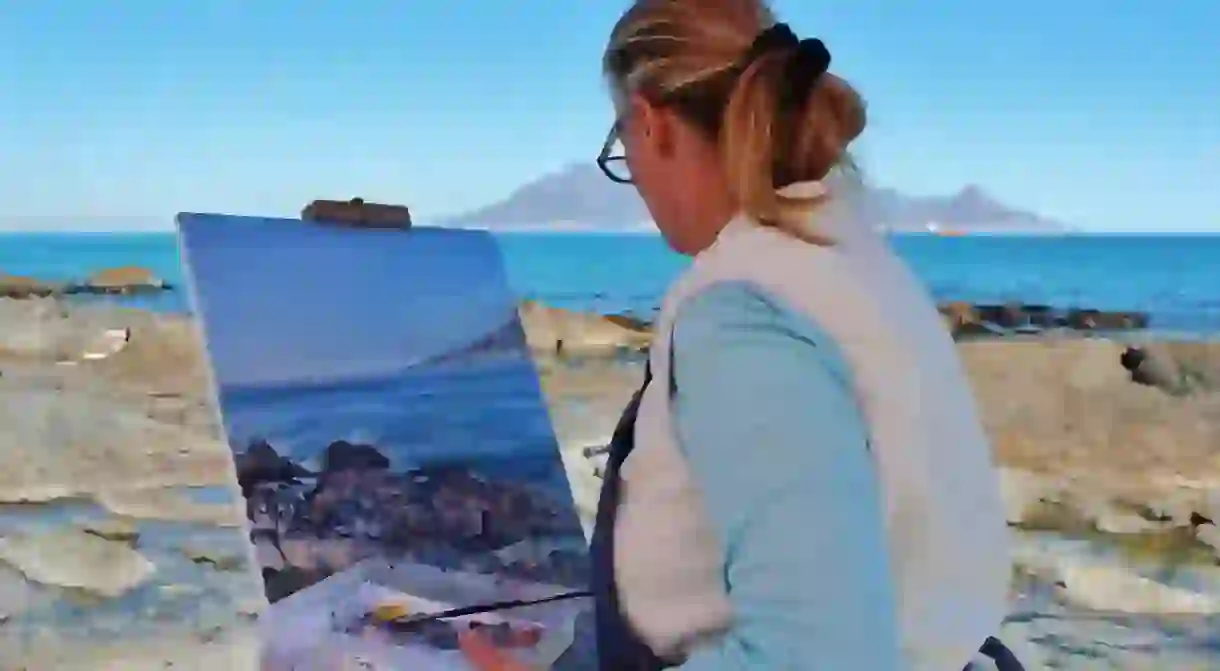The Best Towns for Art Lovers on the Costa Brava

The Costa Brava, the area that runs from just north of Barcelona up to the French border, has long been a place that has attracted artists from all over Europe. Boasting stunning landscapes, charming towns and fishing villages, it is a place that inspires. Here’s our guide to the best towns for art lovers on the Costa Brava, from those home to world-famous museums, to those filled with independent galleries.
Cadaqués
Salvador Dalí was inspired by the small fishing town of Cadaqués, in the top right hand corner of Spain, and so have many artists since. With its rugged landscape of craggy hills, tiny bays and inlets, and whitewashed houses scattered across the hillside, it’s an artist’s dream. Many artists have indeed set up home here, and the town is full of small independent galleries and workshops to admire. Of course the icing on the cake is Dalí’s house-museum, just along the shore in Port Lligat, where you can see how the artist lived and worked.

Figueres
The birthplace of Salvador Dalí and home to the Dalí-Theatre Museum, Figueres is on the top of the list for most art lovers to the Costa Brava. The Theatre Museum is one of Dalí’s greatest works of art itself – designed entirely by the artist, who worked on it for 14 years. Filled with some of his most iconic paintings, it also showcases his sketches and sculptures. Right next door to the museum is a separate museum – Dalí Jewels, exhibiting some of the artist’s most beautiful pieces. It may be all about Dalí here, but don’t miss out on the Empordà Museum, housing one of the Costa Brava’s most important art collections. It displays everything from Italic pottery and mediaeval sculpture to baroque paintings from the Prado Museum in Madrid, as well as many paintings and sculptures from the 19th and 20th centuries. Artists featured include Casas, Monell, Sunyer, and Tàpies.

Olot
The small town of Olot sits right next to the Garrotxa Natural Park, inland from the coast, and makes for a great day trip if you’re staying on the Costa Brava. Its landscape alone, surrounded by ancient volcanoes and lava flows, should make it enough for art lovers to want to visit, but it’s also home to a number of great museums. The first is the Can Trincheria House-Museum – an 18th-century manor house, which belonged to one of the most important families in the region. On display in the house is an ornamental nativity scene with figurines by Ramon Amadeu and period furniture. The walls themselves are decorated with mythological scenes and landscapes. The second museum is the Saints Museum, where visitors can see inside a historic workshop, creating everything from religious figurines to Easter floats, nativity scenes and characters and religious emblems. Lastly is the Garrotxa Museum, showcasing regional art from the late 18th to the mid-20th centuries.

Llançà
The picturesque town of Llançà with its charming pebble beach should be enough to inspire you to get out your watercolours and your brush, but to really get you in the mood, visit the Museu de l’Aquarel·la – J. Martinez Lozano, or Watercolour Museum. The museum started as public collection of one hundred watercolours donated in 1989 by the artist J. Martinez Lozano, and today showcases more than 193 works from various artists.

Sant Feliu de Guíxols
A vibrant town on the Costa Brava coastline, Sant Feliu de Guíxols has much to offer the artist – particularly in the form of the Espai Carmen Thyssen, associated with the famous Thyssen museums in Madrid and Malaga. Having just opened in 2012, it’s an arts centre dedicated to temporary exhibitions, and is quickly becoming one of the most important arts centres in the region. The town also hosts the Porta Ferrada International Festival of Music, Theatre and Dance, held each summer – one of the oldest events in the whole of Catalonia.

Girona
The capital of the Girona province and the Costa Brava is the historic city of Girona itself, home to a great array of museums and a wide range of festivals and events. The two museums most interesting to art lovers are the Girona Museum of Art and the Girona Cathedral Treasury Museum. The Girona Museum of Art is housed in the old Episcopal Palace, dating back to the 10th century and showcases work from the Romanesque period to the beginning of the 20th century. The Girona Cathedral Treasury Museum is housed in part in of Girona Cathedral itself and displays a wide collection of religious art, from the 10th-century Beatus manuscript, to the famous 12th-century Creation Tapestry, Gothic sculptures, paintings and silverware.

Palafrugell
Located along the coast, in the middle of Girona, Palafrugell is the largest town in the municipality of the same name. A vibrant little town that relies on tourism, it offers many cultural sights including the Can Mario Contemporary Sculpture Museum. The museum, run by the Fundació Vila Casas, is housed in an old cork factory and displays around 220 sculptures. The works date from the 1960s to modern day and are mostly all created by Catalan artists from around the region.














